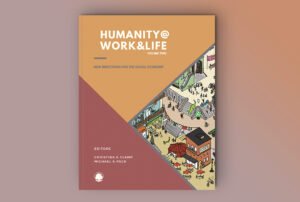
April 5, 2016; Washington Post
Following the murders of two environmental activists in Central America in recent months, justice was served in Costa Rica when convictions were announced for four of seven defendants responsible for the 2013 killing of Jairo Mora Sandoval, a sea turtle conservationist.
Mora was a turtle monitor on Moín Beach in Limón for Widecast, a conservation network operating throughout the Caribbean. Despite the dangers inherent in the work, Mora and four volunteers set out on a spring evening in 2013 to continue their efforts defending Leatherback rookeries against turtle egg poachers, who steal the eggs for sale as snacks despite Costa Rican laws prohibiting the practice. Getting out of his truck to remove a tree trunk put in the middle of the road by poachers to obstruct their work, the small group was brutally overtaken by a gang of attackers who took the volunteers to an abandoned shack and then stripped Mora of his clothing, beat him and tied him to the back of their truck, dragging him to his death.
The environmental community was shocked and saddened when in January 2015 the seven men accused of the murder were acquitted due to mishandled evidence and an incomplete investigation. The verdict was appealed, however, resulting in the recent guilty verdicts for four of the seven on charges of murder, as well as other charges related to the kidnapping and assault of the volunteers accompanying Mora that evening. As reported in the Tico Times, the trial’s chief judge was unambiguous in his decision. “The court rejects that there is any other motive for this murder,” he said. “The killing of Mr. Jairo Mora Sandoval was the straw that broke the camel’s back in this war that was taking place between poachers and environmentalists on the beach.”
There was also some positive news coming out of Honduras, where Amnesty International announced a victory in its efforts to persuade government officials to release Gustavo Castro Soto, the sole witness to the assassination of indigenous leader Berta Caceres in La Esperanza in March. Castro Soto, who had been held since her murder, was allowed to return to Mexico following an international outcry from human rights and environmental groups demanding that the Honduran government release him.
Castro Soto held a press release upon his return, which, as reported by Democracy Now, called for stepped up investigations into Caceres’s assassination:
Sign up for our free newsletters
Subscribe to NPQ's newsletters to have our top stories delivered directly to your inbox.
By signing up, you agree to our privacy policy and terms of use, and to receive messages from NPQ and our partners.
In the case of COPINH and in Berta’s case, it’s another example of how multinationals and major parties who have an interest in mining are involved in the criminalization, death and human rights of indigenous peoples. […] We support the request of the family for a group of independent experts to have an exhaustive investigation, not just for Berta’s murder, but for the process of criminalization and deaths and massacres against COPINH.
As reported by Global Witness, an average of two people are killed every week defending their land against encroachment by large-scale infrastructure projects and other threats, often after having been forced from their homes or livelihoods. In too many countries, the deaths of environmental defenders in resource conflicts are virtually invisible due to a lack of public records or under-reporting in countries where human rights monitoring is prohibited or restricted.
Jennie Erin Smith has written a beautifully haunting account for Turtle Conservancy of the work of Mora in Limón, which may be read in its entirety here. What is particularly sad is that he was part of a creative pilot program devised by Vanessa Lizana, a conservationist with whom he worked closely. Lizana, whose family owns an animal sanctuary on Moín Beach, saw an opportunity to work with area poachers and devised a strategy to recruit them, paying them to tag nesting females and safely transport nests to a safe hatchery near the sanctuary where they would be protected. This experiment proved to be hugely successful and in 2012, the little team that she and Mora had put together had recorded 1,500 nests. Like so many other conservation efforts, however, it bumped up against more powerful political and economic forces, resulting in a loss of security and police protection that had been so critical in an area rife with drug smuggling and brutal violence on the part of the poachers.
Following Mora’s murder, his hometown of Gandoca renamed 12,000 acres of conservation land the Jairo Mora Sandoval Gandoca-Manzanillo National Wildlife Refuge. As Erin Smith writes:
Mora worked fast and walked fast, easily covering 15 miles of beach in a night. He earned an average of $500 a month, standard pay in Costa Rica for science workers without college degrees. So that he could one day earn more, he enrolled in biology courses, holing up between turtle gigs to study. A number of young Costa Ricans make their living as turtle monitors, migrating from nesting beach to nesting beach. The lifestyle suited Mora, offering him among other things a steady stream of foreign women to date; the only things that could distract him from turtles, his friends say, were soccer and girls.
—Patricia Schaefer











